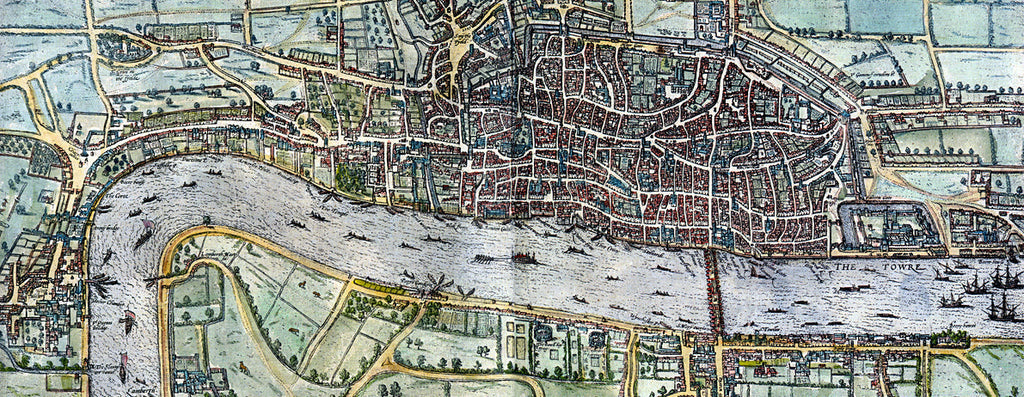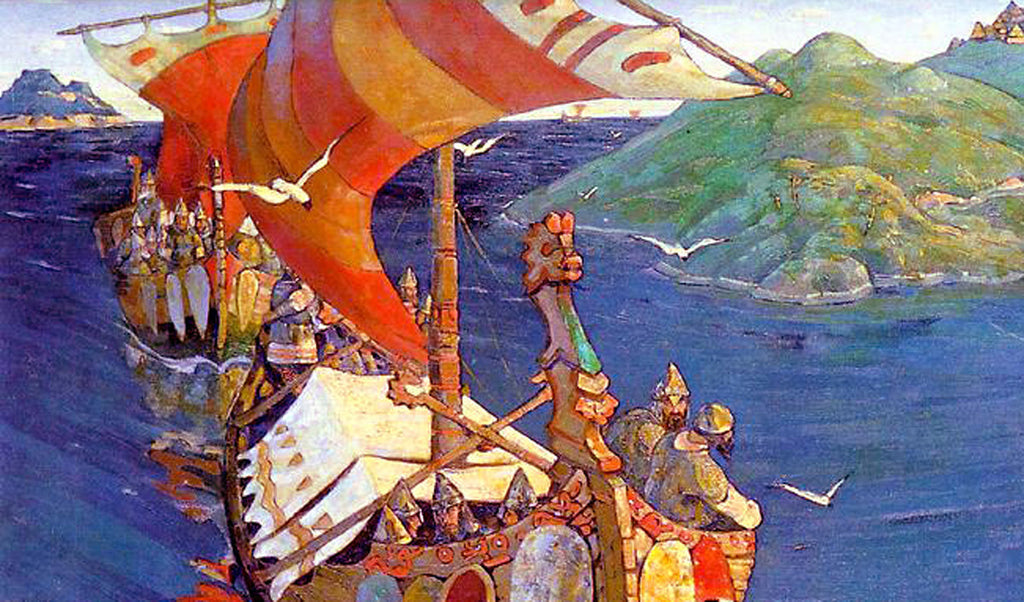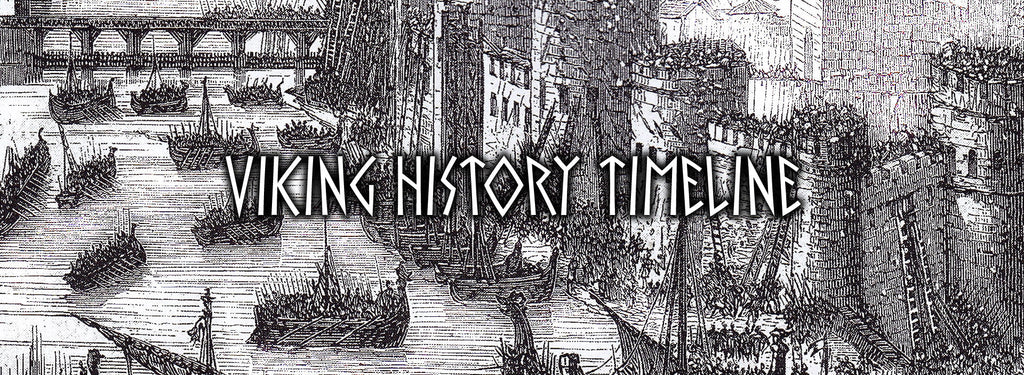
When England was owned by Vikings
Posted by Sons Of Vikings on
Thanks for visiting our blog! As a thank-you, enjoy 15% off your first order in our online Viking Shop with the discount code BLOG15.The Saga of Ragnar Lothbrok refers to London as “the finest city in Scandinavia." This seems like quite a mistake, considering London is the capital of England and sits on the east coast of Britain. However for the skalds who composed the old saga, London was indeed in Scandinavia, for England was once part of a Viking empire. This part of English history is almost always glossed over or simply not mentioned at all. The tidier narrative is that Vikings invaded Britain in the 9th century, quickly knocked down most of the Anglo-Saxon kingdoms, but were eventually halted by...

Historic Arabic Accounts Describing Vikings
Posted by Sons Of Vikings on
Thanks for visiting our blog! As a thank-you, enjoy 15% off your first order in our online Viking Shop with the discount code BLOG15. “I have never seen bodies more perfect than theirs. They were like palm trees. They were fair and ruddy. They wear neither coats nor caftans but a garment that hangs on one side and leaves one hand free. Each of them carries an axe, a sword, and a knife and is never parted from any of the arms we have mentioned. Their swords are broad-bladed and grooved like the Frankish ones. From the tips of his toes to his neck, each man is tattooed in dark green with designs and so forth. All their women wear on...

Viking Diet: Why you should eat like the Vikings did!
Posted by Sons Of Vikings on
“I have never seen bodies more perfect than theirs."
-Ahmed Ibn Fadlan (Arabian diplomat describing Vikings that he traded with)
This article investigates common day to day Viking foods, how and when they liked to eat them, and how Viking nutrition contributed to their success.

History of Viking Arm Rings / Oath Rings
Posted by Sons Of Vikings on
It is no exaggeration to say that life in the Viking Age was held together by oaths. In fact, in the East, Vikings were known as “Varangians,” which meant “Sworn Companions.” A man or woman’s word was binding, and any person of merit would far rather die than violate their word. There was literally a special place in Hel for oath breakers in the Viking belief system ...

Mead and Vikings
Posted by Sons Of Vikings on
Probably the best-known mention of mead in Norse lore is also one of the most famous stories of Odin, the wandering wizard chief god of Norse mythology. In a tale of treachery, murder, battle, shapeshifting, fantastic realms, narrow escapes, and plenty of sex, Odin steals the 'Mead of Poetry' (Norse: Óðrœrir, or “the Source of Inspiration) from fearsome giants (Jotunn). Upon drinking this mead, Odin gains the gift of understanding and mastering the most-treasured Norse art form. This may be another reason why the three interlocking drinking horns of the Triskele (found carved onto numerous runestones) is considered a symbol of Odin. It was said that great poets were blessed by Odin and shared in his mead, while less-talented poets only got the spittle that Odin dropped behind.

Viking History Timeline
Posted by Sons Of Vikings on
This is a chronology of some of the leading people and events of the Viking Age. It is by no means comprehensive but only offers some sense of structure for this dynamic period in human history. Please note that dates are notoriously difficult to pin down during the "Dark Ages," so some of the dates here are approximate and based on mainstream scholarly consensus. Spellings of names and places also vary based on transliteration and sources.

Viking Tattoos and Body Art
Posted by Sons Of Vikings on
Arab diplomat, Ibn Fadlan, gives us the most overt statement on Viking body art, based on his direct experience with them along the Volga River system around the year 922.
“From the tips of his toes to his neck,” Ibn Fadlan writes, “each man is tattooed in dark green, with designs and so forth.” (Lunde & Stone, 2012, p. 46).

Viking Hair Styles
Posted by Sons Of Vikings on
Thanks for visiting our blog! As a thank-you, enjoy 15% off your first order in our online Viking Shop with the discount code BLOG15.Vikings came from an honor culture where individuals expressed their worth through actions, words, and appearance. Abundant jewelry, clothing, combs, and personal care items recovered by archaeologists show that personal presentation was of great importance in Viking societies. But while the Viking preoccupation with hair and grooming are well established, what their hair styles actually looked like is a surprisingly controversial topic. Since Vikings only left cremated or skeletal remains, and since the written material from the era is almost always sparse in detail, how can we really know what Vikings looked like? This article will examine the...

Filthy Barbarians or Dapper Danes?
Posted by Sons Of Vikings on
It is a hell of a thing for Medieval English chroniclers to admit that one of the reasons they hated Vikings was because their own wives and daughters couldn't resist their cleanliness.

Amazing Mjölnir Artifacts
Posted by Sons Of Vikings on
Thanks for visiting our blog! As a thank-you, enjoy 15% off your first order in our online Viking Shop with the discount code BLOG15. Mjölnir (most common English pronunciation being: "me-owl-neer") was the mighty hammer of Thor, most beloved champion of the Norse gods. Thor used Mjölnir as his primary weapon in protecting humanity and gods alike from sea serpents, giants, ogres, and the forces of chaos. Thor’s role as protector earned him the kennings (poetic refrains) of “Defender of Asgard and Midgard” and “Friend of Mankind.” Thor and Mjölnir were invoked at pivotal moments – not just battles, but common experiences like weddings, births, funerals, or any time people needed blessings and good fortune. Steadfast, compassionate, and almost invincible, Thor...
